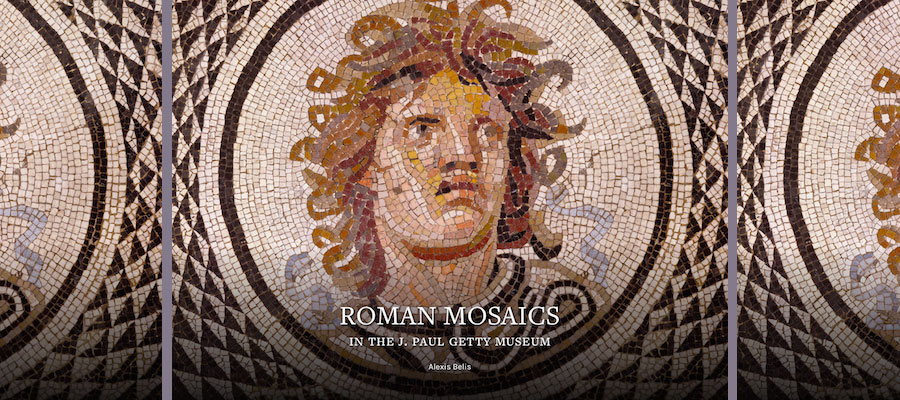Alexis Belis. Roman Mosaics in the J. Paul Getty Museum. J. Paul Getty Museum, 2016.
From the J. Paul Getty Museum
In Roman decor, elaborate mosaics transformed entire rooms into spectacular settings of vibrant color, figural imagery, and abstract design. Intricate patterns and narrative scenes were created by setting tesserae—small pieces of stone or glass—into floors and walls. The mosaics in the collection of the J. Paul Getty Museum span the second through the sixth centuries AD and reveal the diversity of compositions found throughout the empire during this period. Recovered from various archaeological contexts, these mosaics provide a glimpse into the richly embellished architecture of the ancient world.
Several mosaics in the Getty’s collection came from known sites in the Roman Empire and survived from antiquity in their original architectural contexts, having once decorated villas, baths, and churches. Presented here is rich archaeological evidence and new material documenting the mosaics’ modern discoveries, particularly from excavations in Villelaure and Antioch.
This catalogue includes mosaics featured in Roman Mosaics across the Empire, on view at the Getty Villa in 2016. The exhibition showcases ten mosaics from the Getty alongside treasures on loan from other collections, including LACMA’s mosaic of Diana and Callisto, which was discovered in the same villa in Villelaure as the Getty’s mosaic of Dares and Entellus.
The catalogue can be downloaded free of charge.
